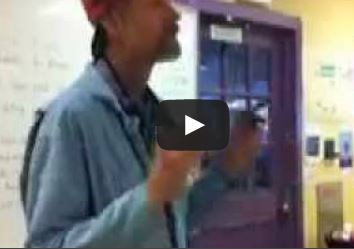Learning Manufacturing and Funding Education
Read through Marshfield High School’s list of college scholarships, and one of the listings you’ll see is the “Marshfield Pirate Shop Scholarship.” The Pirate Shop is this Oregon school’s manufacturing instruction program.
Share





​
Read through Marshfield High School’s , and one of the listings you’ll see is the “Marshfield Pirate Shop Scholarship.” The Pirate Shop is this Oregon school’s manufacturing instruction program. Students in this program practice their machining and welding skills by making furniture that is sold to fund a scholarship available for any type of education. On the scholarship list, you’ll see that the Pirate Shop’s scholarship is not included among those that are “voc/tech-specific”—it gives scholarship grants to Marshfield graduates pursuing various degrees.
In the video seen here, Pirate Shop students and their instructor, Tom Hull, talk about the manufacturing program. The video also gives us a brief glimpse of one of the program’s instructional volunteers, Bob Schalck. Read his perspective on this volunteering.

Related Content
-
Solve Worker Shortages With ACE Workforce Development
The America’s Cutting Edge (ACE) program is addressing the current shortage in trained and available workers by offering no-cost online and in-person training opportunities in CNC machining and metrology.
-
How I Made It: Amy Skrzypczak, CNC Machinist, Westminster Tool
At just 28 years old, Amy Skrzypczak is already logging her ninth year as a CNC machinist. While during high school Skrzypczak may not have guessed that she’d soon be running an electrical discharge machining (EDM) department, after attending her local community college she found a home among the “misfits” at Westminster Tool. Today, she oversees the company’s wire EDM operations and feels grateful to have avoided more well-worn career paths.
-
Addressing the Manufacturing Labor Shortage Needs to Start Here
Student-run businesses focused on technical training for the trades are taking root across the U.S. Can we — should we — leverage their regional successes into a nationwide platform?













